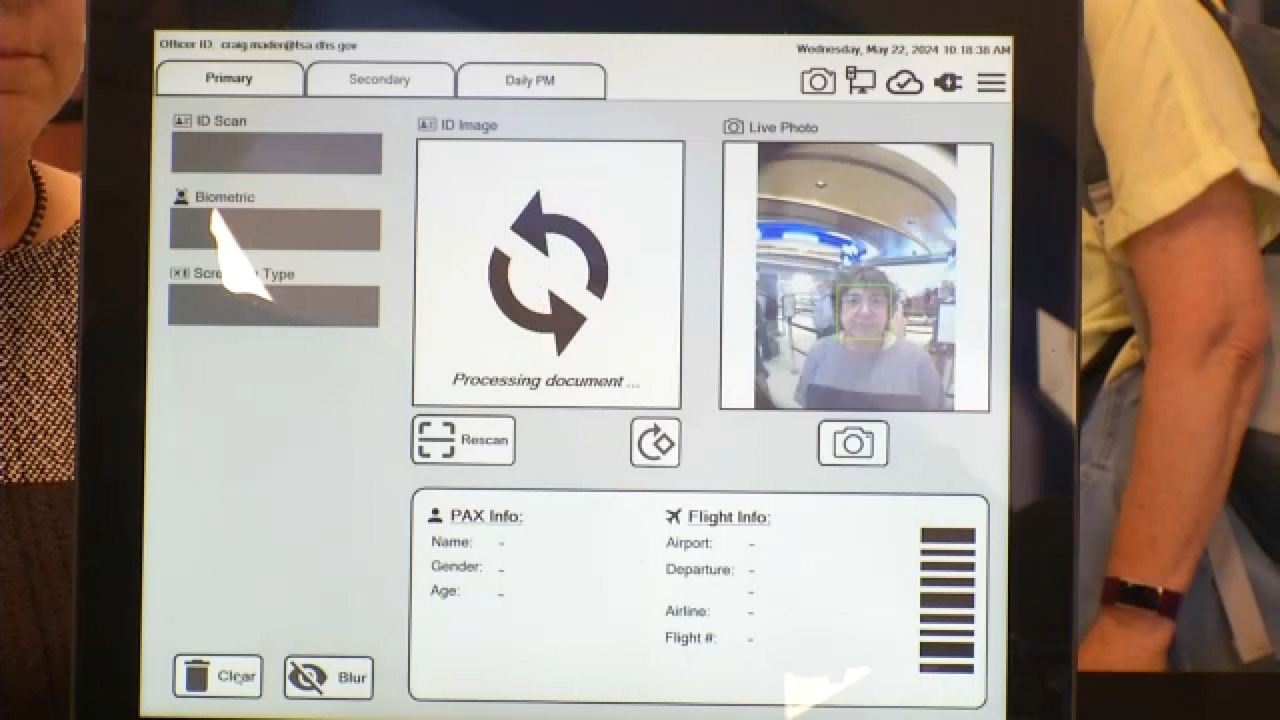ROCHESTER, N.Y. — The Transportation Security Administration continues to add its advanced facial recognition technology at airport checkpoints despite some opposition.
Airports are bracing for what could be record-breaking numbers of travelers this coming holiday weekend and all summer.
The TSA is continuing to add its advanced facial recognition technology at checkpoints.
The new technology is designed to make it safer when you travel by plane. But not everyone is on board.
The TSA already uses the Credential Authentication Technology, or CAT-2, at many airports and is now unveiling it at Frederick Douglass Greater Rochester International Airport. When you hand over your ID, you also get your picture taken.
“We’re going to snap a photo of the passenger’s face to make sure that the person standing there matches the face on the ID. It’s also going validate that you are ticketed to fly out of this airport on this day,” said TSA spokesperson Lisa Farbstein.
She said the CAT-2 enhances detection capabilities for identifying fraudulent documents, “It enhances security and that’s what we’re about. All we want to do is make sure that we know who is boarding our planes. That’s a critical point of why we have these new credential authentication technology units with a camera.”
“We’re very concerned that this is a technology that is going to spread throughout our society,” said Senior Policy Analyst at the National American Civil Liberties Union Jay Stanley.
The ACLU is among the groups, politicians and others opposed to the facial recognition technology.
“The TSA is going all in on using face recognition for really very frivolous reasons that aren’t really necessary and they’re just normalizing face recognition in American life and they’re paving the way for a much broader scope of uses that could really challenge privacy seriously in American life,” Stanley said.
Farbstein says the photos are deleted and it’s not mandatory.
“If you want to opt out of having your photo taken, that’s fine too,” she said. “You just tell the officer that you don’t want your photo taken and what they’re going to do is just verify you the way they did previously.”
“So the opt out, they always promise this when it comes to new very controversial technologies that make the public nervous,” Stanley said. “And then when people get used to it, they pull the rug out and say. ‘Well, now it’s mandatory.’”
It’s an apparent balancing act between privacy and safety.
“They’re really normalizing face recognition check points in American life which is not something we want to see, and they shouldn’t be taking us down this path,” Stanley said. “They’re doing the country a disservice.”
“This is just that extra step, the state-of-the-art technology that can verify identification,” Farbstein said.
The TSA says the plan is to have the new technology at every security checkpoint lane at every airport across New York state.

